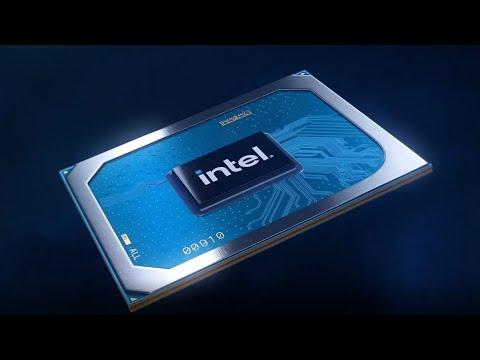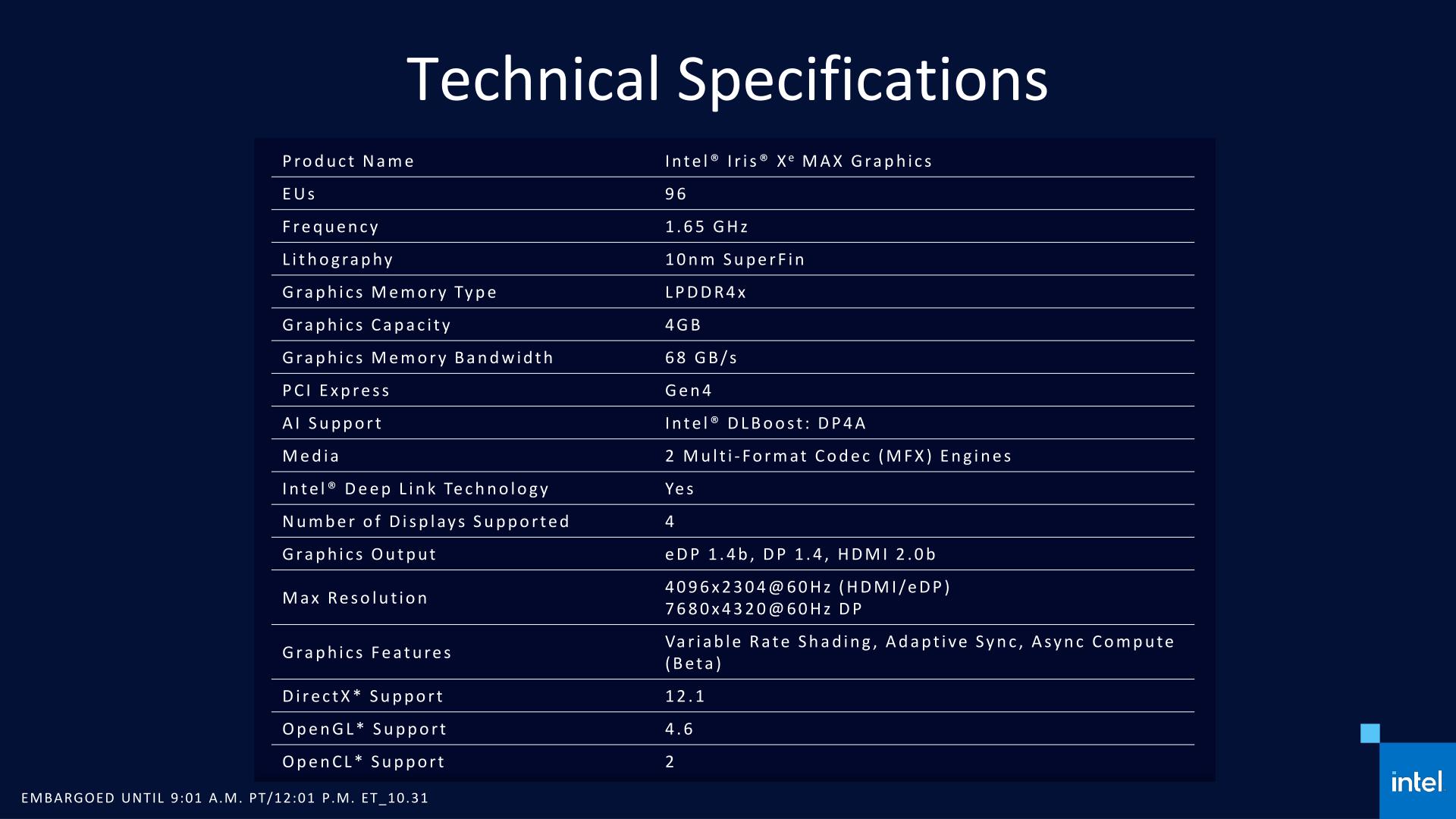Intel did something of a surprise this weekend, especially on a Saturday: they announced their first Xe-based discrete GPU with the Iris Xe MAX Graphics.
Built with their 10nm "SuperFin" process, the Intel Iris Xe MAX graphics will be based on the Xe-LP microarchitecture that's being used for their Iris Xe graphics in 11th Gen Intel Core mobile processors. This is the first set of discrete graphics along with PCIe Gen 4 support. It's also introducing their new "Deep Link technology, which unlocks creativity in thin-and-light laptops by aggregating multiple processing engines and a common software framework and graphics driver".

Direct Link
From the press release:
What Deep Link Does: Deep Link aggregates multiple processing engines through a common software framework to bring new capabilities and better performance to PCs. This framework helps to unlock creativity in thin-and-light laptops by maximizing CPU performance, boosting artificial intelligence (AI) creation performance and taking industry leading encode to the next level.
How Deep Link Works: Deep Link technology brings together processing engines under a common software framework, allowing software developers to significantly boost content creation workload performance. Applications can scale certain workloads across integrated and discrete graphics. Examples include:
- An additive AI capability that enables inferencing and rendering on both GPUs to accelerate content-creation workloads.
- A combination of industry-leading encode engines in each GPU through hyper encoding that allows the time to render out videos for reviewing or sharing.
According to the press material, Deep Link will be available and supported with the likes of OBS Studio, HandBrake and others with more support coming to the likes of Blender, CyberLink, Fluendo and Magix.
Intel said it's already available and shipping on the Acer Swift 3x, Asus VivoBook Flip TP470 and Dell Inspiron 15 7000 2 in 1. Additionally, their press release made it clear that Intel is pushing forwards with their plan for an Xe-LP-based discrete GPU for desktop PCs to be released in the first half of 2021.
Also, weren't all their iGPU drivers so far? They started long before AMD.
I hope they can offer good entry-level option (< 100W).
It's either AMD's little RDNA2 GPUs whenever they come out or something from Intel.
So all that Deep Link murfle . . . can anybody tell me if that stuff actually means something or if it's just marketing-speak?I just assumed someone at marketing forgot to take take their dried frog pills?
Still, the line about "unlocking creativity in thin-and-light laptops" is deeply disconcerting. I prefer it if I was the creative one and my laptop stuck to cold calculating logic.
What does Intel expect to happen? To out run AMD and NVidia on GPUs now? o.o
Benchmarks have integrated Xe easily competitive with integrated Vega. How it scales up to a dedicated chip remains to be seen.
So all that Deep Link murfle . . . can anybody tell me if that stuff actually means something or if it's just marketing-speak?
As I understand it, it's big.LITTLE for Intel GPUs (except that they can both be active at the same time if the application calls for it).
Last edited by CatKiller on 2 Nov 2020 at 7:14 pm UTC
Ah, I see. Uh . . . next question: What's big.LITTLE?So all that Deep Link murfle . . . can anybody tell me if that stuff actually means something or if it's just marketing-speak?
As I understand it, it's big.LITTLE for Intel GPUs (except that they can both be active at the same time if the application calls for it).
Ah, I see. Uh . . . next question: What's big.LITTLE?
ARM big.LITTLE
It was an ARM thing to have both performant cores and power-sipping cores that share memory, so that tasks can be run on whichever is appropriate at a given time.








 How to set, change and reset your SteamOS / Steam Deck desktop sudo password
How to set, change and reset your SteamOS / Steam Deck desktop sudo password How to set up Decky Loader on Steam Deck / SteamOS for easy plugins
How to set up Decky Loader on Steam Deck / SteamOS for easy plugins
See more from me